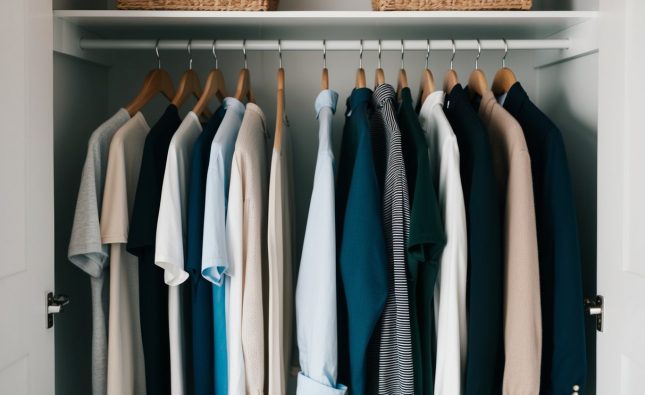
Luxury brands often carry a hefty price tag, leading many to seek out more budget-friendly options without sacrificing quality or style. Fortunately, countless affordable alternatives exist that provide similar aesthetics and craftsmanship at a fraction of the price. This opens the door for savvy shoppers to enjoy the latest trends and timeless designs without breaking the bank.

Exploring these alternatives allows individuals to access high-quality products while staying within their budget. Numerous brands have emerged, offering stylish clothing, accessories, and home goods that mimic the luxury market’s appeal. This burgeoning range of choices ensures that even those with limited resources can enjoy a touch of luxury in their lives.
As consumers become more discerning, identifying and utilizing these affordable substitutes has never been more important. By focusing on brands that prioritize quality and design, shoppers can find items that not only fit their budget but also elevate their personal style.
Understanding the Appeal of Luxury Brands
Luxury brands are often admired for their rich history, superior quality, and the status they confer on their owners. The following sections explore how heritage, craftsmanship, and exclusivity contribute to their allure.
Brand History and Heritage
Luxury brands carry stories and traditions that span decades or even centuries. Established names like Louis Vuitton and Chanel have cultivated identities steeped in prestige. Heritage can enhance a brand’s narrative, attracting consumers who seek authenticity and a connection to the past.
Heritage also fosters loyalty. Customers often feel a sense of belonging to a lineage when purchasing from a brand with a storied history. This connection can transform a simple purchase into a meaningful investment, as consumers appreciate not just the product but the legacy it represents.
Quality and Craftsmanship
Luxury brands emphasize high-quality materials and exceptional craftsmanship. The meticulous attention to detail in the manufacturing process sets these products apart from mass-produced alternatives. For instance, a Hermès handbag is handmade by skilled artisans, ensuring durability and aesthetic appeal.
Materials used are often sourced from the finest origins, such as Italian leather or Swiss silks. The exceptional quality guarantees longevity, which is appealing to consumers looking for value in their purchases. Each piece reflects an investment in artistry, making luxury goods desirable for their tangible and intangible qualities.
Exclusivity and Status Symbolism
Owning luxury items often symbolizes success and affluent lifestyle choices. The perception of exclusivity plays a significant role in the appeal of these brands. Limited-edition releases or unique collections can create scarcity, which elevates demand.
This exclusivity contributes to a sense of prestige. Brands like Rolex or Gucci become status symbols, enhancing the social standing of their owners. Consequently, many consumers pursue luxury brands to signal their achievements and taste to their peers, making the purchase a reflection of identity and values.
Identifying Affordable Alternatives
Finding alternatives to luxury brands involves exploring various avenues that maintain quality and style while remaining budget-friendly. This section details high-quality dupes, emerging affordable luxury brands, and the benefits of thrifting.
High-Quality Dupes
High-quality dupes are replicas that mimic the look and feel of luxury items without the hefty price tag. Brands like Aldo and Zara often produce trendy footwear and apparel that closely resemble high-end designs.
Online resources like Pinterest and Instagram serve as great tools to discover brands creating these dupes. Additionally, websites such as ShopStyle can help users track down similar items at lower price points.
Shoppers should watch for quality factors, such as fabric and stitching, ensuring that the dupes provide durability and style. Researching customer reviews can further guide consumers in selecting the best options.
Emerging Affordable Luxury Brands
Emerging brands often bridge the gap between luxury and affordability. Reiss and Mango are notable examples that deliver modern designs at prices that won’t break the bank.
These brands focus on high-quality materials and craftsmanship while maintaining a contemporary aesthetic. They often draw inspiration from luxury trends but prioritize inclusivity in price.
Consumers may also explore online marketplaces like ASOS and Net-a-Porter, which showcase a variety of newer designers offering chic alternatives. Shopping during sales can yield significant discounts, making it easier to invest in stylish pieces.
Thrifting and Second-Hand Options
Thrifting offers a sustainable way to find affordable alternatives to luxury brands. Stores like Goodwill, Buffalo Exchange, and specialized consignment shops often have a treasure trove of unique, high-quality items.
Online platforms such as Poshmark and Depop connect sellers with buyers, allowing access to pre-owned luxury goods at reduced prices. Shopping on these platforms encourages mindful consumption while uncovering rare finds.
When thrifting, it is essential to check for authenticity, especially with luxury items. Familiarity with brand identifiers can help verify whether a product is genuine, ensuring good investment in quality pieces.
Shopping Strategies for Smart Consumers

Smart consumers can maximize value by adopting specific shopping strategies. By leveraging sales, utilizing rental services, and exploring various marketplaces, they can find high-quality items without overspending.
Leveraging Sales and Discounts
Sales and discounts are critical for budget-conscious shoppers. Major retail events such as Black Friday, Cyber Monday, and seasonal sales offer substantial savings.
Consumers should also consider signing up for store newsletters to receive exclusive coupons and early sale notifications. Many brands have loyalty programs that provide additional savings or points redeemable for future purchases.
Tips for Successfully Leveraging Sales:
- Compare prices before buying to ensure the sale is genuine.
- Use cashback websites to earn extra savings on purchases.
- Shop off-peak times for better selection and less competition.
Utilizing Fashion Rental Services
Fashion rental services provide a smart alternative to luxury purchases. They allow consumers to wear high-end brands for a fraction of the retail price.
These services often offer options for special occasions, enabling consumers to enjoy luxury fashion without commitment. After the event, items can be returned, reducing storage concerns.
Popular Rental Options Include:
- Rent The Runway: Known for dresses and accessories.
- Le Tote: Offers a subscription model for everyday wear.
Consumers can benefit from trying high-value designer clothes without the financial commitment of purchase.
Exploring Outlet Malls and Online Marketplaces
Outlet malls can be treasure troves for smart shoppers looking for discounts on luxury brands. These locations offer last season’s stock or slightly imperfect items at reduced prices.
Additionally, various online marketplaces, like Poshmark or ThredUp, connect consumers with second-hand luxury items. Users can find authentic goods at competitive prices, often in excellent condition.
Key Strategies for Shopping at Outlets and Marketplaces:
- Research brand outlets to know where to find deals.
- Review seller ratings on online platforms for reliability.
- Set a budget to avoid overspending on impulse buys.
This approach allows consumers to expand their wardrobe without spending a fortune.












